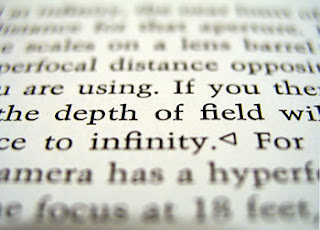
spider from Nakamura, Japan. 2007.
the spider is more in focus than the road or background foliage
Im no photographer - but i think the focal point was somewhere in between the spider and the camera - as the spider is non as sharp as it could be.
in Houdini : try lowering your F-Stop to increase Blur for DOF effects
eg:
addendum:
from Side Effects website:
hscript expression for distance from cam to null)
vlength(vtorigin("/obj/path_to_camera", "/obj/path_to_null"))
from exhelp: vector vorigin (string obj1, string obj2)
Returns a vector of a objects's transforms.
This function will return a vector with 6 values in it. The values are
set to "[TX, TY, TZ, RX, RY, RZ]" for the position of obj1 relative to
obj2.
This can also be thought of as the position of obj2 relative to obj1.
If the empty string ("") is specified for either obj1 or obj2, then
the identity transform will be used instead. For example, if obj1 is
the empty string, then the world space position of obj2 is returned.
vtorigin (string obj1, string obj2)
Returns a vector of an object's translations.
This function will return a vector containing the translates required
to transform obj1 to the space of obj2.
This can also be thought of as the position of obj2 relative to obj1.
If the empty string ("") is specified for either obj1 or obj2, then
the identity transform will be used instead. For example, if obj1 is
the empty string, then the world space position of obj2 is returned.
RELATED
origin
vorigin
vrorigin
originoffsetin my efforts to learn more about the world of digital fx - i thought id try and document some stuff weekly.
tonight some DOF
links
luminous-landscape.com
online DOF calculator
Retouchpro.com
Wikipedia
Large Format Photography
what do i already know ?
- it greatly enhances realism in cg.
- it can be slow to calculate in cg- it definitely has been slow to calculate so far in my experience with 3DSmax (3D DOF ?) .
- there are cheats - blurring with z-depth has been my solution for most my personal work so far.
- it has a range. the distance from the subject to the camera and the camera lens settings determines if the subject falls within the focal range. if it is outside of the focal range - it will be blurry.
CoC - circle of confusion
the circle of confusion is is the diameter of a 'sufficiently small' blurspot.
A photograph is perceived as acceptably sharp when the blur spot is smaller than the acceptable circle of confusion. The size of the “acceptable” circle of confusion for the original image (eg film) depends on three factors:
- Visual acuity - quality of individuals eyesight - may be impaired by environment.
- The distance at which the final image is viewed.
- The enlargement of the final image from the original image.
it also figures that for DOF the typical magnification of enlargement from neg to print is 5x
so 1/6th of a mm div by 5 for the neg is .0333' mm - this is the "Circle of Confusion" that many 35 mm lens manufactures use when making their lenses. it is a circular shape because of the nature of the lens.
a definition of DOF
"The area in front of and behind a focussed subject which stays sharp in the photographic print."
this should be "The area in front of and behind a focussed subject which stays sharp in the photographic print - within the limits of the applied COF."
DOF is also the far focal point distance minus the near focal point distance.
one of the laws of optics seen in DOF tables is that the DOF extends one third in front of the subject and 2 thirds behind it. This means there is twice as much DOF behind a subject as there is in front of it.
the Hyperfocal Distance
the hyperfocal distance is the nearest DOF distance at which the DOF can extend to infinity.
focussing the camera at the hyperfocal distance enables the largest possible DOF for a given f-number. Focussing beyond the hyperfocal distance will not increase the DOF but actually decrease it or 'waste it' as some photographers say. The far focal point is staying the same - at infinity - but the near focal point is moving further away - so the focal distance is getting smaller.
from wikipedia:
although a lens can only focus on one point - the falloff of focus is gradual on either side of the focal point.

What is the science behind it ?
from : www.dofmaster.com/equations.html
- hyperfocal distance
f is the lens focal length in mm - everything should be in mm
f^2 is f squared
N is the f number
c is the circle of confusion in mm again.
to convert the H to feet from mm : divide by 304.8 and 1000 for m.
- near distance of acceptable sharpness
- far distance of acceptable sharpness
s = focal distance
see wikipedia's formulae for more detail
next week aberrations !





No comments:
Post a Comment